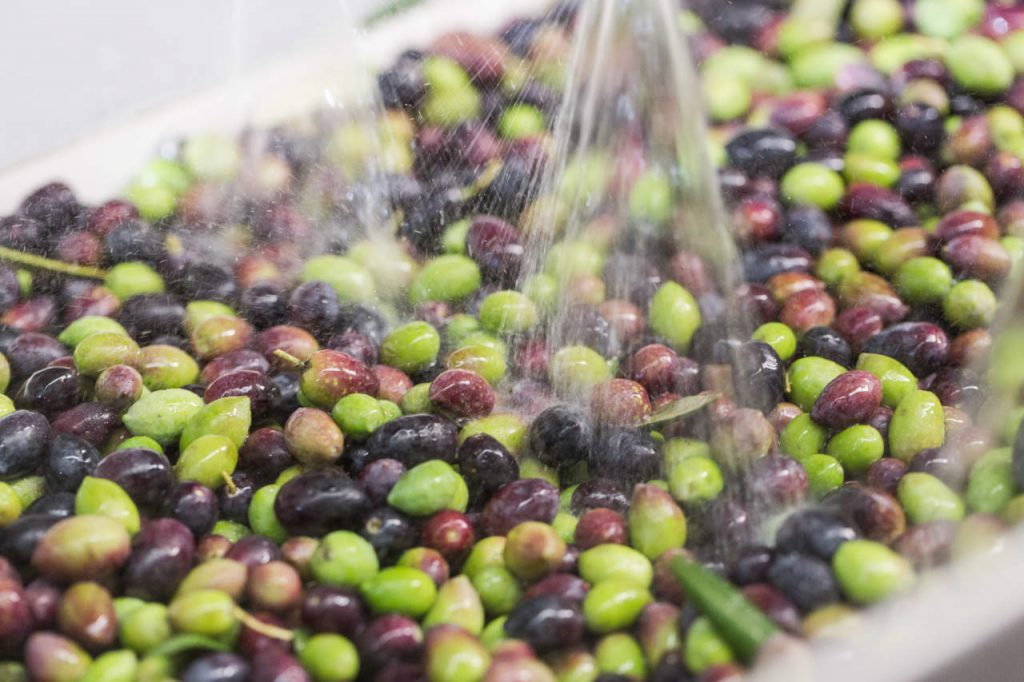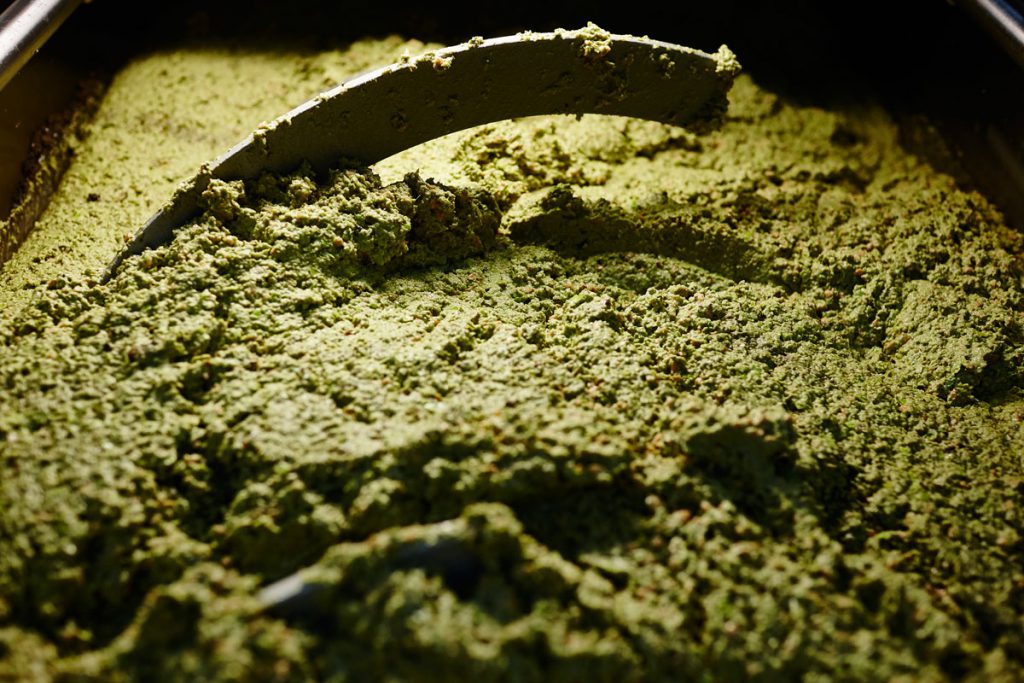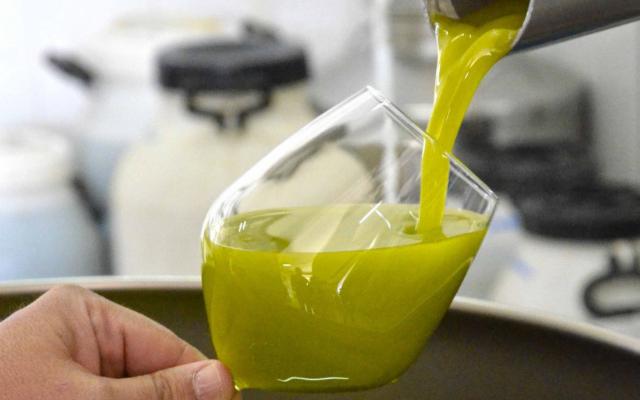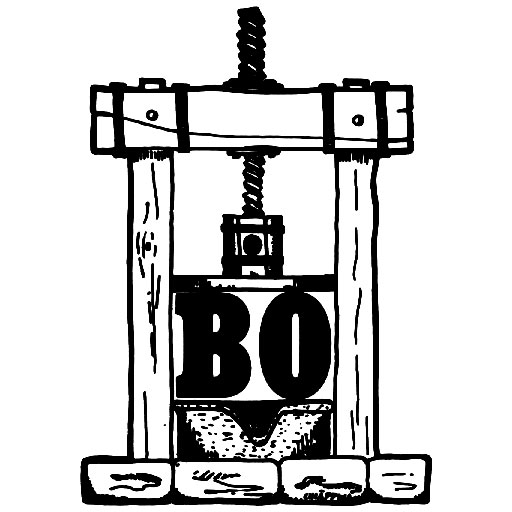The production process


After this first cleaning, the olives reach the washing machine, which removes any remaining stones or clods of earth through a jet of water under pressure. The olives are then ready to be pressed in the “crusher”, a hammer mill that transforms the olives into an oily paste that is ready to be kneaded.


After the kneading process, the olive paste is centrifuged by the “decanter”, a machine that uses the physics of specific weights to separate the oil and the vegetation waters from the solid part or “pomace” consisting of the pulp and the stones. After this first extraction, the unrefined oil and vegetation waters are poured into two vertical separators to complete the extraction process.

The fresh oil or the “must” appears opaque yellow with greenish reflections. The colour does not speak to the quality and authenticity of the final product. It may change over time according to the variety of olives, the degree of ripeness and the possible presence of leaves.

